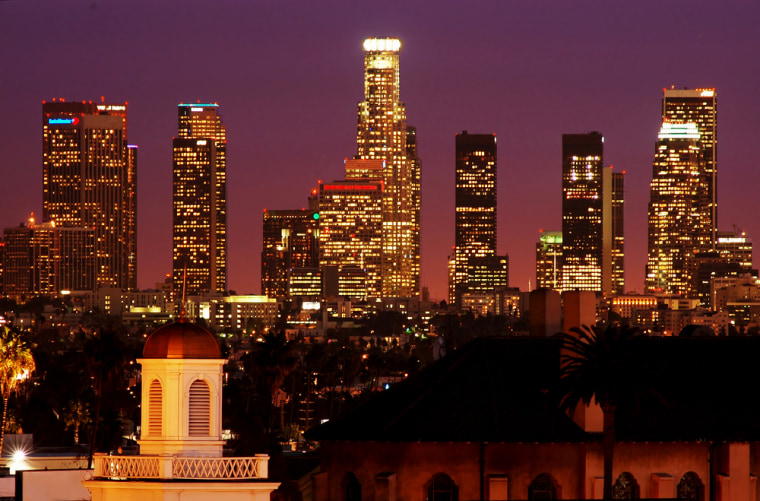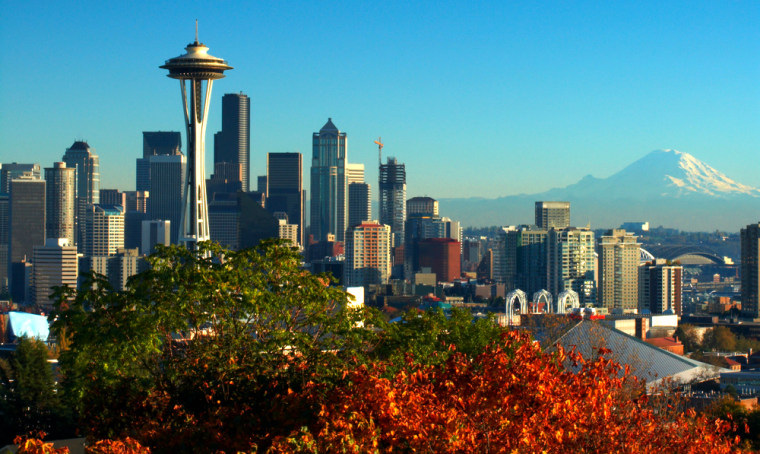You may notice some patterns in the Forbes Traveler list of 30 Most Visited U.S. Cities: sunny climates, Texas, and play a prominent role.
And the usual suspects are here — the major urban centers like , and attract tens of millions of non-residents annually. But a few surprises pop up, too. Who knew, for example, that Charlotte, N.C., is the second largest financial center in the U.S. and, with more than 16 million yearly visitors, outranks the likes of ?
Dan Erkkila, former Chairman of the Board of the Travel and Tourism Research Association and current Extension Professor at the University of Minnesota Tourism Center, explains that “being a member of the top-tier U.S. destination elite generally involves a complex blend of tangible ingredients (like travel cost) and intangible ones, like destination image.”
That image, Erkkila argues, is becoming more and more important to a city’s appeal. “Natural features like the Grand Canyon or cultural icons like the Statue of Liberty will always draw the crowds,” he says. “But more and more, the marketing of destinations is now more about how a destination will make you ‘feel’ when you visit. It is about the whole experience. It’s about how it changes you — momentarily or forever. So rather than, for example, Las Vegas being about coming to gamble or see entertaining shows, it’s about how being there makes you feel. You get to be naughty and let your hair down, because whatever you do there, stays there!”
Christopher Pike, a senior consultant with Global Insight, a market analysis firm, agrees that image plays a substantial role in U.S. cities’ tourist appeal. The most visited cities, he says, are “constantly reinventing their destination, whether it’s the new hotels in Vegas, the international flavor in New York City — there is always something new going on.”
Pike adds that a major tourist attraction within a city has a kind of double power: it draws tourists, and it increases a city’s exposure in the media. “New York is on every night in the evening news,” he says, adding to the city’s presence in potential visitors’ minds.
Vacationing tourists are only part of what give a city notable visitor numbers, says Dan Erkkila: “You don’t get to be a tier-one destination solely from the leisure travel market; business and event travel are critical to attaining the kinds of numbers we see in the top ten.” Brad Garner, Vice President of Operations and Client Services at Smith Travel Research, a lodging industry information and data provider, agrees: “Group bookings are what’s driven the recovery” in the domestic travel industry since a slump in 2002 through 2004.

Given the importance of business and group travel, it’s hardly surprising that a city like Phoenix, No. 12 on our list with 12 million annual overnight visitors, is investing in a $600 million expansion of its Convention Center.
Garner points out another common denominator among the nation’s most visited locales: they’re almost all near major airports. “It’s very cheap to hop on a plane and fly to the major markets,” he says.

So where how do perennial visitor favorites New York, Las Vegas, and San Francisco stack up? And how high did Mickey Mouse catapult Disney destinations like Orlando and Anaheim?
Read on to see our list of the U.S.’s 30 most visited cities.
Methodology
Before you place your bets on Forbes Traveler’s U.S. Most Visited Cities, a word about methodology: we started with two separate rankings based on two different sets of data, and then combined those lists for our final score. For our first ranking, we used the numbers from cities’ convention and visitors bureaus. These numbers are usually calculated based on factors like airport and cruise traffic, bed tax collections, attraction visitor counts and event figures. While most cities report overnight and day visitors, some report only overnight visitors. To correct for this, we augmented these overnight-only numbers with an estimate of day visitors (either provided by the convention and visitors bureaus or, where that was not available, by calculating our own estimate based on figures from another city of comparable size and geography). We have noted where day-visitor estimates were added to convention and visitor bureau numbers. A visitor is defined as one who travels 50 miles or more each way, omitting commuters. Cities are the Metropolitan Standard Areas as defined by the U.S. Census bureau, unless otherwise noted.
Because of the variability inherent in the numbers from visitors bureaus (they’re self-reported by the cities, which may use different sources and methodologies, and 2006 numbers are not yet available at all locales, for example), we looked at another, independent set of numbers: Smith Travel Research (STR) provided data on hotel rooms sold for the year 2006 in the major U.S. metro markets.
Our final list combines these two rankings and adjusts for overnight and day-trip reporting disparities. We weighted each list equally,by dividing each city's visitor and hotel-room number by the average in each category. (The average visitor number in the self-reported visitor category number was 24.8 million; the average in STR’s rooms sold list was 13.7 million.) We then added these two scores to give each city its final score. So, for example, Orlando’s convention and visitor’s bureau reported 47.8 million visitors for 2006. The category average was 24.8 million, giving Orlando a score in the “visitor” column of 1.93 above the average. In the “rooms sold” category, STR reported that Orlando sold 27.2 million rooms in 2006. The category average was 13.7, giving Orlando a score in the “rooms sold” category of 1.98 above the average. Orlando’s final score, then, is 1.93 plus 1.98, or 3.91, putting it in third place overall behind the number one city, which received a 4.5 total. (Click to the slide show to find out which took the No. 1 spot).
Convention and visitor bureaus’ figures are for 2006 unless noted otherwise.
